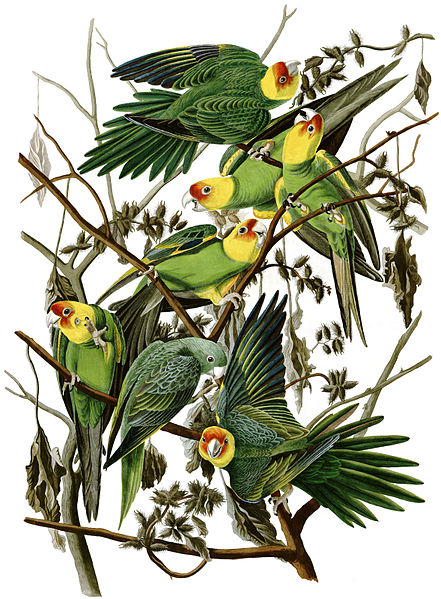
In
“Sketches Here and There” Aldo Leopold takes us from an elegy of a marsh
drained for farmland to a monument/gravestone of a species, the passenger
pigeons, to place after natural place facing the threat of humans and often
succumbing to a homogenized fate. One of
the most heart-breaking lines was at the beginning of “The Green Lagoons”: “It is
the part of wisdom never to revisit a wilderness, for the more golden the lily,
the more certain that someone has gilded it.
To return not only spoils a trip, but tarnishes a memory.” Earlier in “On Top” Leopold offers a similar
sentiment: “Despite several opportunities to do so, I have never returned to the
White Mountains. I prefer not to see
what tourists, roads, sawmills, and logging railroads have done for it, or to
it. I hear young people, not yet born
when I first rode out ‘on top,’ exclaim about it as a wonderful place. To this, with an unspoken mental reservation,
I agree.”
I went
into science because I was concerned about conservation issues, but I do wonder
if science can do enough fast enough if people have neither an appreciation
nor passion for the natural world. But,
then, in those circumstances, I have no solution either. It is sad to think that Leopold feared going
back to a place he had known at an earlier time, having learned no doubt
repeatedly, that nature is not universally valued or protected. Leopold makes us feel this loss
poignantly.
Although
despite this loss, often brought about by guns, as well as saws, we frequently find
Leopold hunting. I cannot decide if that
is the optimist in him or the human instinct that he often rails against. (He shows no optimism regarding returning to
wild places he had loved, if that offers any clue.) I have a healthy respect
for hunters, and appreciate that through them we gain many natural areas and
wild life. But, it is hard for me to
reconcile the hunter in Leopold who is able to take such pleasure in the
woodcocks dance, yet still bag one or two of them; and, surely there is nothing
wrong in that, but it still surprises me.
In “Clandeboye,” a marsh where Leopold spends time trying to catch a
close look of the ever-wary grebe, one finally appears and then another with
two young on her back. In the margins I
wrote “Please don’t shoot!” because I can never tell with him. Fortunately, he listened this time. We all must partake of the food web in some
way, and it seems to grow more challenging by the year to discern how to make a
minimal global impact (and local hunting may be one of the very best strategies
when it is all said and done).
These
passages have had me thinking about the first species I saw in my bird guide
that would have lived within my range, if it had not gone extinct: the Carolina parakeet (above...you knew that was no Wisconsin bird, didn't you?), the only North
American parakeet. I remember feeling
that new knowledge in my stomach. Still
printed in the bird guide then, but why?
To remind us of our own nature?
Of how much more there is to lose?
Or perhaps the writer of the field guide still held a hope that it would
turn up somewhere and a birder with his guide would be there to witness its
return. If hope is the thing with
feathers, then perhaps that is the best explanation.





